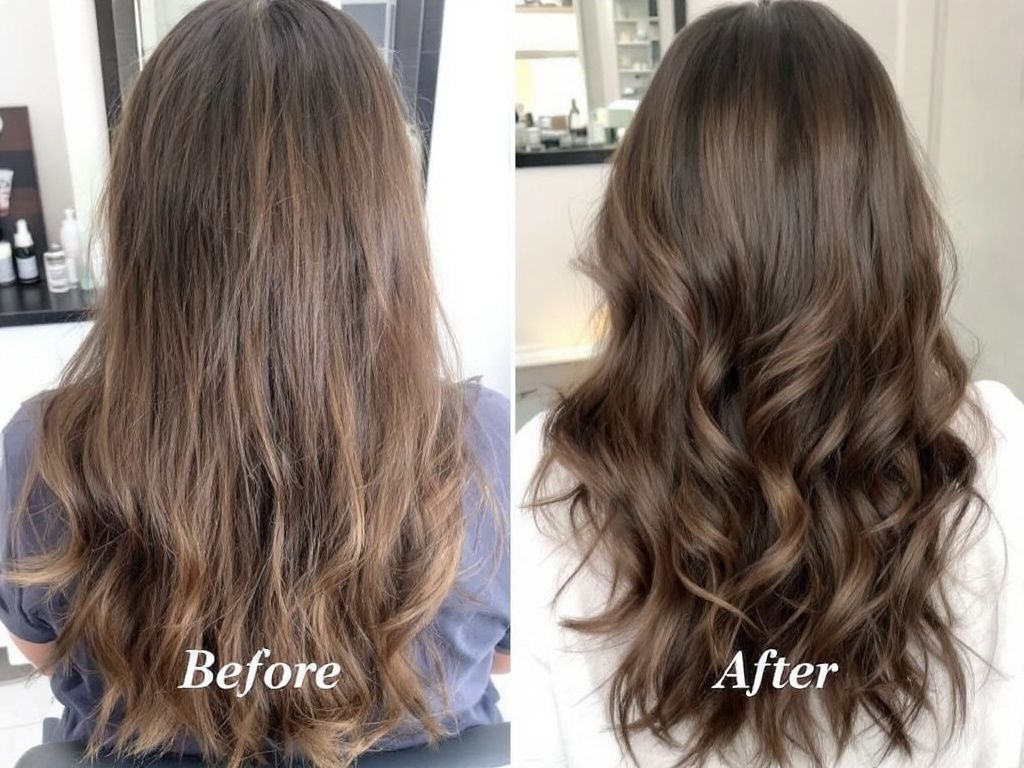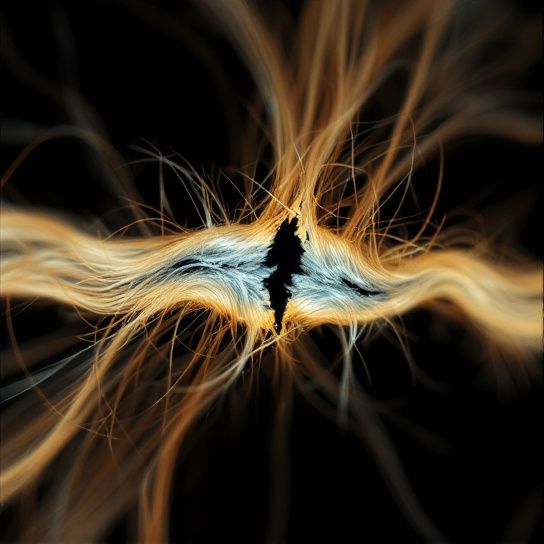
Ever looked in the mirror, wondering why your hair is behaving like it’s got a mind of its own? Our hair can be quite the mystery, especially when it’s dry or seems dehydrated. I mean, you might find yourself throwing every moisturizing product into the mix, hoping for some improvement, and yet, nothing. What gives, right? Let’s dive into this hair conundrum, shall we?
Unpacking the Terms: Dry Hair vs. Dehydrated Hair
We often think of dry and dehydrated hair as the same thing, but they’re more like distant relatives than twins. They show similar signs but need different care tactics. Sort of like siblings with distinct personalities.
Dry Hair: The Low Oil Scenario
Dry hair happens when your hair isn’t producing enough natural oils. It’s a condition often dictated by genetics or age, just like wrinkles. In that sense, normal day-to-day habits and just the passage of time itself can play their part. This scenario leaves your hair feeling coarse and brittle, a bit like straw.
Dehydrated Hair: Thirsty Strands
On the flip side, dehydrated hair doesn’t have enough moisture (water) inside the strands. Imagine it as your hair being thirsty but not able to grab a drink. External factors like weather, heat styling, and specific products can play a huge role here.
**Key distinction:** Dry hair lacks oil; dehydrated hair lacks water.

The Signs: Knowing What to Look For
Knowing what you’re dealing with can make a world of difference in your hair care routine. Here’s what you might notice:
Dry Hair Characteristics
- Brittleness: How often does your hair snap like a twig? More than you’d like, probably.
- Dullness: Think of the shine you see in hair commercials – dry hair doesn’t have that.
- Split Ends: If you’re spending too long staring in the mirror, analyzing every split, you’re not alone.
Characteristics of Dehydrated Hair
- Flat Look: Flatter than a pancake. Your hair won’t thank you for this comparison, but it’s the truth.
- Tangled Mess: Dehydrated hair tangles at the mention of wind or humidity.
- Frizz City: A constant struggle, the frizz isn’t always just about hydration, but it gets exponentially worse when your hair’s dehydrated.
Causes: What’s Firing Up this Hair Drama?
Let’s get into what sets this chain reaction in motion. Both hair types share some common villains, but they also have their unique troublemakers.
Common Culprits for Both Types
- Weather Extremes: Winter winds, harsh summer suns – neither is a friend to healthy locks.
- Heat Styling: Overuse can sap natural moisture faster than you can say “straightener.”
- Product Overload: Build-up stops moisturizing agents from penetrating the hair shaft.
Unique Causes for Dry Hair

- Aging: It sneaks up on you, innocent as it seems, and affects oil production.
- Scalp Health: Weak or inadequate oil production here can spread trouble all the way down your shaft.
- Genetics: Can’t dodge what your genes set up.
Unique Causes for Dehydrated Hair
- Inadequate Hydration: Your water intake doesn’t just affect your skin; hair feels thirsty, too.
- Improper Conditioning: Not all conditioners are created equal.
- Environmental Stresses: Pollution, smoky environments – sometimes stepping outside is hazardous!
Treatment: Tackling the Issues Head-On
Time to roll up those sleeves and show dry and dehydrated hair who’s boss.
Fixing Dry Hair
- Embrace Oils: You might feel like a turkey getting a spice rub, but natural oils like coconut and argan oil add much-needed luster.
- Reduce Shampoo Frequency: Hold back on the daily wash – natural oils could really use the break.
- Cold Rinse: It’s bracing! A cold rinse locks moisture and oils in.
Nourishing Dehydrated Hair

- Hydration is Key: Not just by gulping down H2O, but incorporating hydrating sprays and products.
- Deep Conditioning Masks: Weekly lush treatments are your pal for locking that moisture deep inside.
- Avoid Sulfates and Alcohols: They suck out your hair’s moisture faster than a nightmare sandstorm.
Common Hints for Both
- The Satin Sleep: If multiplex steps seem too much, switch to silk or satin pillowcases. They maintain your strands’ integrity.
- Cut Regularly: Beyond aesthetics, regular trims curb split ends and parts with dryness.
Comparison Table: A Handy Overview
| Feature | Dry Hair | Dehydrated Hair |
|---|---|---|
| Lack of… | Natural oils | Moisture (water) |
| Key Characteristics | Brittleness, dullness, split ends | Flatness, tangles, frizz |
| Common Causes | Weather, heat styling, product overload | Pollution, improper hydration, harsh products |
| Treatment Highlights | Use oils, reduce shampoo, cold rinse | Stay hydrated, deep conditioning, exclude sulfates |
Mistakes to Avoid
Learning from mistakes sounds great until you’re actually, well, learning that way. Better to dodge these common missteps!
- Ignoring the Scalp: Remember, healthy hair starts here. Treat it kindly.
- Over-washing: Excellent cleansers are key, but overdoing it eventually means your own natural goodness goes down the drain.
- Cheap Thrills: In the battle between price and quality, sometimes, investing in a product pays off in the long game!
Wrapping It Up: Keeping the Balance
Both dry and dehydrated hair require time, understanding, and care. It’s like any relationship – demands effort, patience, and a dash of creativity. Look closely at the signs your hair is giving you and tweak your routine accordingly. In the end, your hair deserves the best, and when treated right, it’ll flip and curl with vitality and health. Trust me; your reflection will be something to admire, this time with that hair flick you’ve been practicing to cinema perfection. Keep giving your mane the best shot because, well, you deserve it!
Frequently Asked Questions
What is dry hair?
Dry hair is a condition where the hair lacks sufficient moisture and oil to maintain its normal sheen and texture. This can result from the scalp not producing enough oil or the hair losing its natural moisture[1][3][5>.
What are the common causes of dry hair?
Dry hair can be caused by several factors, including a dry scalp, age-related changes, environmental conditions such as dry climates and sun exposure, lack of protection for the hair cuticle, excessive hair washing or use of harsh shampoos, heat damage from styling tools, and certain health problems like anorexia or hormonal imbalances[1][3][5>.
How can I treat and manage dry hair?
To treat dry hair, it is recommended to wash your hair less frequently, use mild shampoos and moisturizing conditioners, avoid alcohol-based products, use natural oils like coconut or jojoba oil, and consider professional deep conditioning treatments. Trimming split ends and maintaining a balanced diet rich in vitamins and minerals can also help[1][3][5>.
When should I consult a medical professional about my dry hair?
You should consult a medical professional if your dry hair does not improve with gentle treatment, if you experience hair loss or breaking hairs, or if you have other unexplained symptoms. A doctor may perform a physical examination, ask about your hair care habits, and conduct diagnostic tests such as a scalp biopsy or blood tests to identify underlying health issues[3>.
References


Leave a Reply